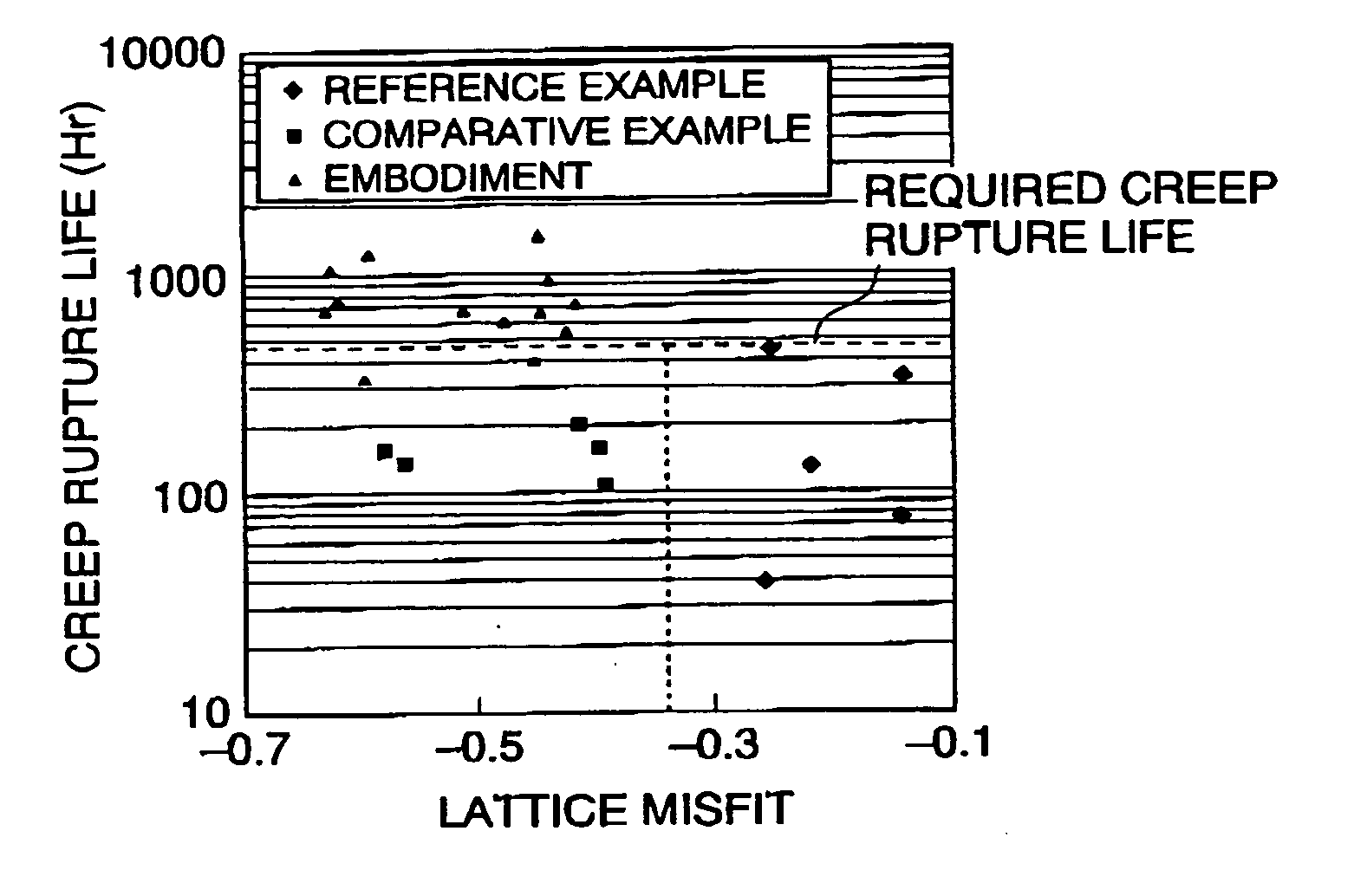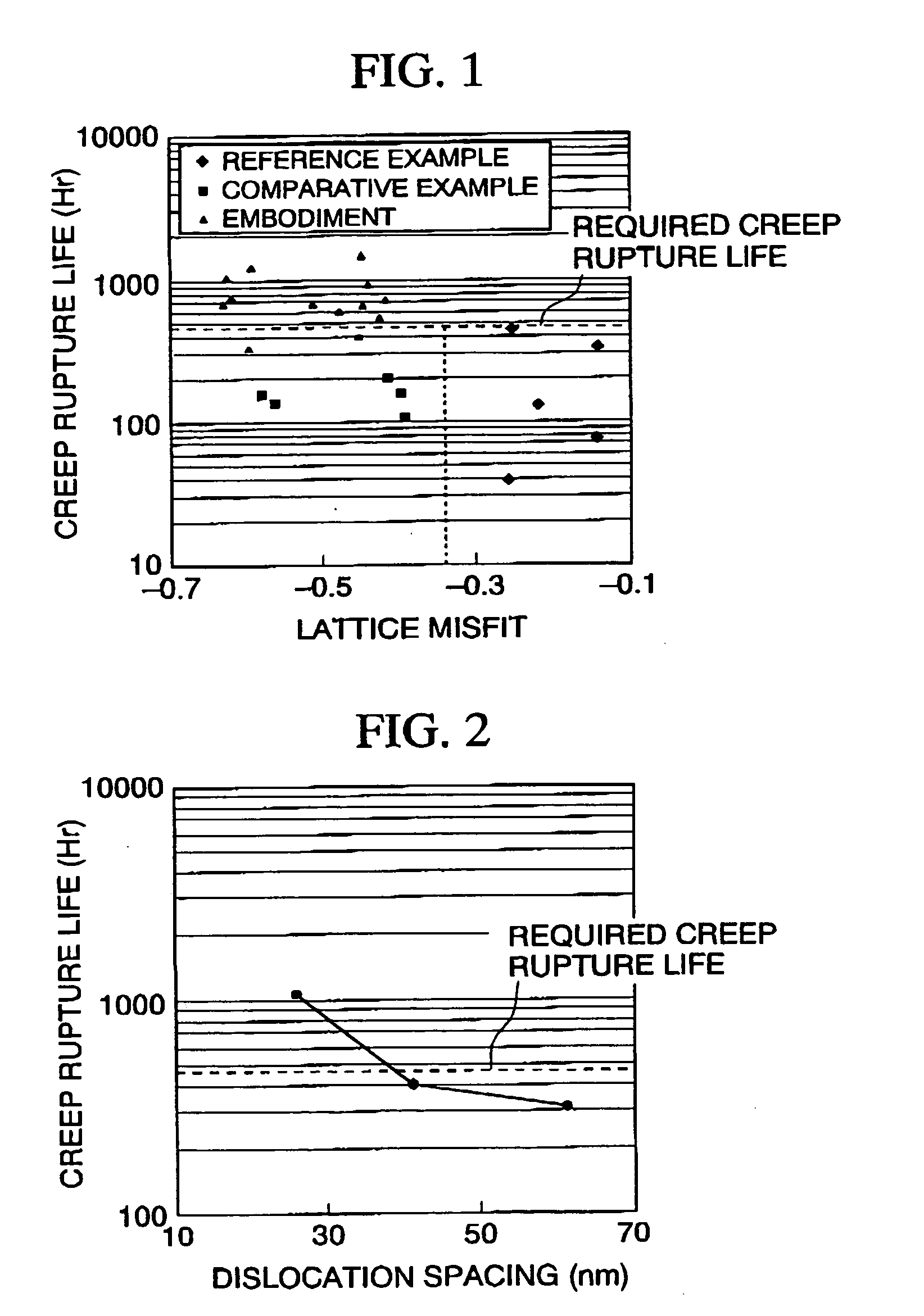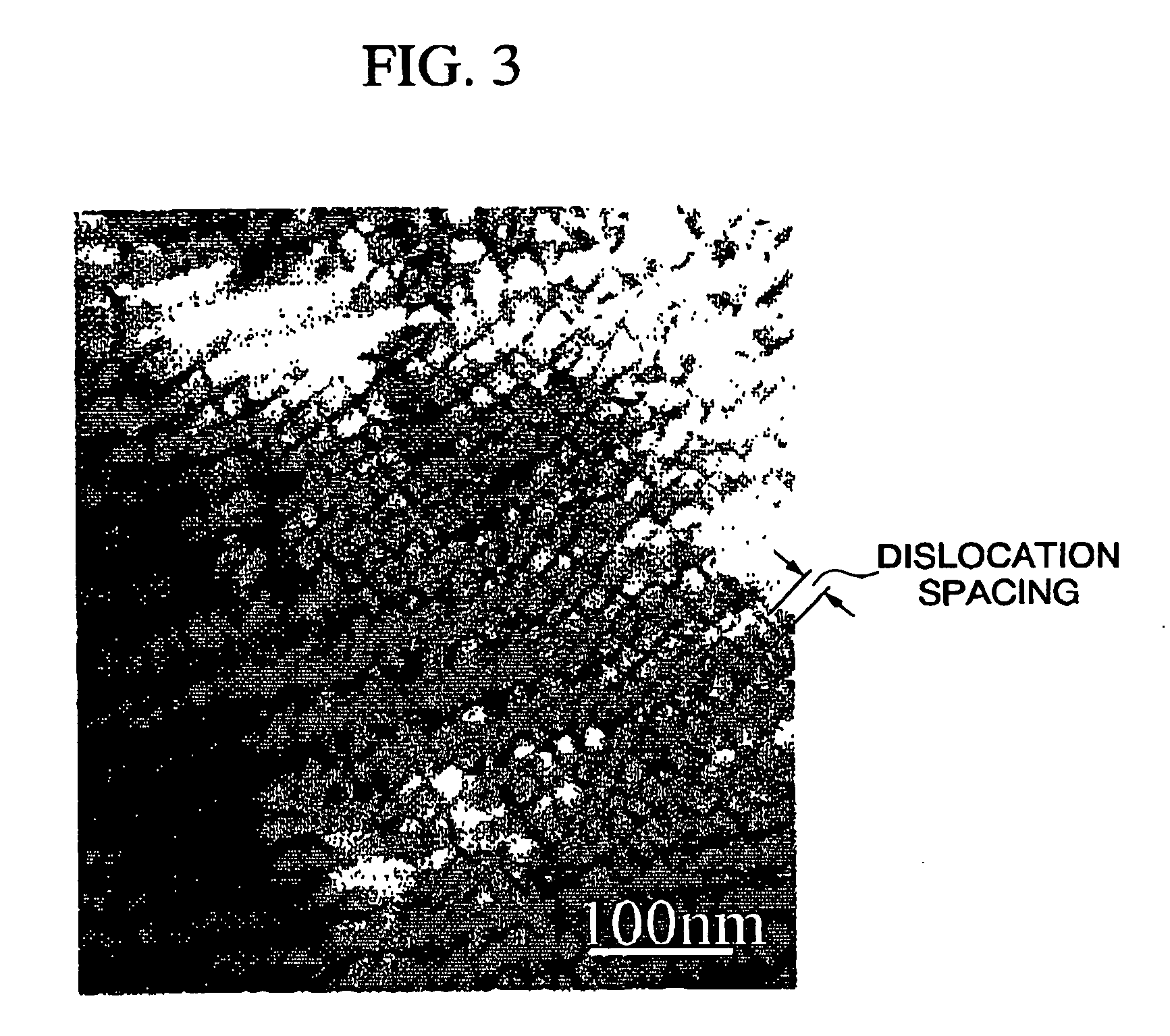Ni-based single crystal superalloy
a single crystal, super alloy technology, applied in the field of ni-based single crystal super alloys, can solve the problems of reducing creep strength, difficult to make fine adjustments in lattice constant, inferior creep strength of third-generation alloys, etc., and achieve the effect of enhancing strength at high temperatures
- Summary
- Abstract
- Description
- Claims
- Application Information
AI Technical Summary
Benefits of technology
Problems solved by technology
Method used
Image
Examples
embodiments
[0071] The effect of the present invention is shown using following embodiments.
[0072] Melts of various Ni-based single crystal super alloys were prepared using a vacuum melting furnace, and alloy ingots were cast using the alloy melts. The composite ratio of each of the alloy ingots (reference examples 1-6, embodiments 1-14) is shown in Table 2.
TABLE 2Sample(alloyElements (wt %)name)AlTaNbMoWReHfCrCoRuNiReference6.05.83.26.05.00.13.06.02.0RemExample 1Reference5.95.73.25.95.00.13.05.93.0RemExample 2Reference6.06.04.06.05.00.13.06.03.0RemExample 3Reference5.95.94.05.95.00.13.05.94.0RemExample 4Reference5.95.73.15.94.90.12.95.94.0RemExample 5Reference5.75.72.97.74.80.12.95.73.0RemExample 6Embodi-5.95.93.95.94.90.12.95.95.0Remment 1Embodi-5.85.63.15.84.90.12.95.85.0Remment 2Embodi-5.85.83.95.84.90.12.95.86.0Remment 3Embodi-5.65.62.85.66.90.12.95.65.0Remment 4Embodi-5.65.00.52.85.66.90.12.95.65.0Remment 5Embodi-5.65.61.02.85.64.70.12.95.65.0Remment 6Embodi-5.85.63.95.84.90.12.95.86.0...
PUM
| Property | Measurement | Unit |
|---|---|---|
| Nanoscale particle size | aaaaa | aaaaa |
| Temperature | aaaaa | aaaaa |
| Lattice constant | aaaaa | aaaaa |
Abstract
Description
Claims
Application Information
 Login to View More
Login to View More - R&D
- Intellectual Property
- Life Sciences
- Materials
- Tech Scout
- Unparalleled Data Quality
- Higher Quality Content
- 60% Fewer Hallucinations
Browse by: Latest US Patents, China's latest patents, Technical Efficacy Thesaurus, Application Domain, Technology Topic, Popular Technical Reports.
© 2025 PatSnap. All rights reserved.Legal|Privacy policy|Modern Slavery Act Transparency Statement|Sitemap|About US| Contact US: help@patsnap.com



